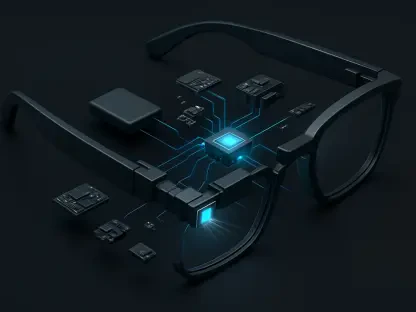In the world of technology, where advancements happen in the blink of an eye, understanding the intricacies of laptop testing is crucial for potential buyers. With her extensive background in mobile technology and hardware, Nia Christair offers insight into how Laptop Mag approaches testing and evaluation, ensuring readers are well-informed before making a purchase decision.
Could you describe the variety of laptops that Laptop Mag reviews?
Laptop Mag reviews an impressive range of laptops, covering everything from lightweight ultrabooks to robust gaming machines. Each category serves a specific purpose, whether it’s for business productivity, casual use, or high-powered gaming. We categorize the laptops into various segments, such as budget, mainstream, and premium for general use, as well as entry-level, mainstream, and premium for gaming. This classification helps readers narrow down their options based on their budget and requirements.
How do you initiate the testing process for a laptop at Laptop Mag?
Before diving into tests, we begin by thoroughly researching the laptop’s specifications and intended use. This involves gathering information on its hardware, design, and the manufacturer’s performance claims. There’s a standardized initial procedure for all laptops, which allows us to maintain consistency across our reviews. It helps set a reliable benchmark for comparison.
What specific productivity tests does Laptop Mag use for Windows laptops?
For productivity, we utilize BAPCo Crossmark to assess system responsiveness in tasks like document editing and spreadsheets. This test is comprehensive and provides an overall productivity score, which is invaluable for cross-comparing devices. Similarly, Geekbench highlights a laptop’s processing capabilities by evaluating text and image compression, rendering activities, and machine learning. Its results give us a snapshot of the CPU’s power, which is crucial for both everyday tasks and demanding applications.
Could you elaborate on the File Copy test?
The File Copy test measures how quickly a laptop can move a 25GB folder composed of a variety of files, such as documents and videos. This test reveals the drive’s speed, providing insights into the laptop’s real-world performance. The results are quantified in megabytes per second, which helps us understand the device’s efficiency in handling large file transfers.
How do you evaluate the multimedia capabilities of a laptop?
Multimedia evaluation involves tests like HandBrake, where we measure how fast a laptop can convert a high-resolution video. It’s a straightforward way to gauge encoding capabilities. HDXPRT 4 takes this further by using real applications to test photo and audio editing proficiency. While HandBrake assesses speed, HDXPRT provides insights into multimedia task performance under real-world conditions.
What graphics tests are conducted for Windows laptops?
We use 3DMark’s Fire Strike and Time Spy to test gaming performance on DirectX 11 and 12. These are intense benchmarks for dedicated graphics. Night Raid is another test, focused on integrated graphics, giving us data points on laptops with less powerful GPUs. These tests collectively help us understand a laptop’s graphical prowess in different gaming scenarios.
How do you assess a laptop’s casual gaming capabilities?
We look at games like Civilization VI for casual gaming benchmarks. The test involves medium settings with some enhancements, and the frame rate metric allows us to predict the laptop’s gaming performance without overly taxing the system. It offers a balanced perspective of everyday gaming possibilities on more mainstream laptops.
How is heat testing performed on laptops?
Heat is monitored by playing high-resolution videos for an extended period, and we measure temperatures at key points like the keyboard and underside using an infrared thermometer. This is crucial because it assesses how well a laptop manages heat during typical usage scenarios, which can affect performance and comfort.
How do you evaluate a laptop’s display features?
The Klein K10-A colorimeter measures screen brightness and color accuracy. These factors are vital for providing users with an immersive visual experience. For OLED screens, additional brightness tests are conducted to assess true black levels. Such evaluations help determine whether a screen can meet the demands of design professionals or entertainment enthusiasts.
Could you explain how Laptop Mag conducts battery tests?
Battery tests replicate daily usage by surfing web pages until the battery depletes, with consistent settings like brightness at 150 nits and disabled background apps. This stringent methodology ensures reliable results, aiding consumers in understanding how long a laptop lasts on a full charge, helping them choose devices that meet their mobility needs.
What additional tests are performed on gaming laptops?
Gaming laptops undergo further graphics testing with additional settings and titles like Red Dead Redemption 2. These tests push the hardware to its limits, offering insights into high-end gaming capabilities. These evaluations provide clarity on what gamers can expect in real-world scenarios and help differentiate between performance tiers.
How is the gaming heat test different from the standard heat test?
For gaming laptops, we conduct heat testing by running demanding games like Metro Exodus at extreme settings. This test aims to simulate intense gaming sessions and measures how effectively a laptop can sustain peak performance without overheating, which is essential for maintaining long-term reliability and user comfort.
What criteria are used for the gaming battery test?
The gaming battery test involves running a continuous loop of a demanding 3DMark test, observing how long a gaming laptop can sustain gaming sessions without power. Although gaming typically requires plugging in for optimal performance, this test provides additional context on power consumption and potential for unplugged gaming.
Do you have any advice for our readers?
When choosing a laptop, consider your primary usage and the balance between portability, performance, and price. Be sure to prioritize features like battery life, screen quality, and thermal performance according to your main activities, whether they’re work-related tasks or gaming. Understanding these elements will lead to a more satisfying purchase decision.









